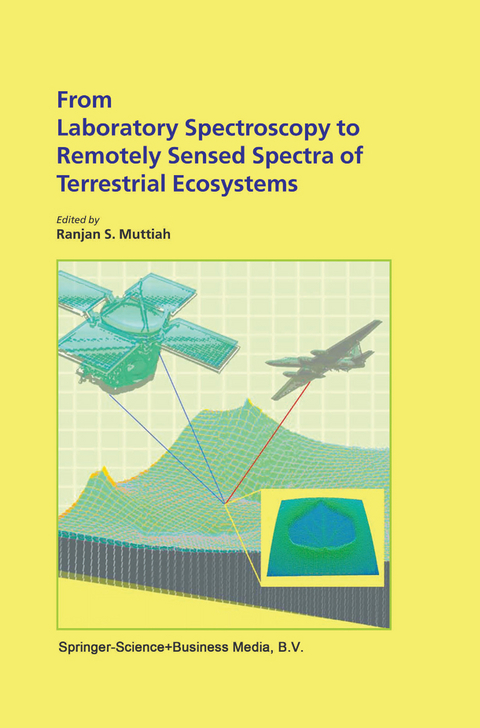
From Laboratory Spectroscopy to Remotely Sensed Spectra of Terrestrial Ecosystems
Springer (Verlag)
978-90-481-6076-1 (ISBN)
1. Spectroscopy of Salts Common in Saline Soils.- 2. Microwave Remote Sensing of Soil Moisture.- 3. Possible Application of Laser Light Scattering.- 4. Scattering (Mueller) Matrices and Experimental Determination of Matrix Elements.- 5. Application of the T-matrix Method to Light Scattering from a Leaf.- 6. Landscape Indication Based on Stochastic Relaxation.- 7. Neural Network Method in Plant Spectral Recognition.- 8. Carbon Sequestration from Remotely-Sensed NDVI and Net Ecosystem Exchange.- 9. Remote Sensing of Weed Canopies.- 10.Detecting Chlorophyll Fluorescence From Orbit: the Fraunhofer Line Depth Model.- 11. Remote Sensing of Solar-Induced Chlorophyll Fluorescence from Vegetation Hyperspectral Reflectance and Radiative Transfer Simulation.- 12. General Spectral Characteristics of Leaf Reflectance Responses to Plant Stress and their Manifestation at the Landscape Scale.
| Zusatzinfo | XXXII, 296 p. |
|---|---|
| Verlagsort | Dordrecht |
| Sprache | englisch |
| Maße | 155 x 235 mm |
| Themenwelt | Naturwissenschaften ► Biologie ► Ökologie / Naturschutz |
| Naturwissenschaften ► Chemie ► Analytische Chemie | |
| Naturwissenschaften ► Geowissenschaften ► Geografie / Kartografie | |
| Naturwissenschaften ► Geowissenschaften ► Geologie | |
| Naturwissenschaften ► Geowissenschaften ► Meteorologie / Klimatologie | |
| Technik ► Umwelttechnik / Biotechnologie | |
| ISBN-10 | 90-481-6076-6 / 9048160766 |
| ISBN-13 | 978-90-481-6076-1 / 9789048160761 |
| Zustand | Neuware |
| Informationen gemäß Produktsicherheitsverordnung (GPSR) | |
| Haben Sie eine Frage zum Produkt? |
aus dem Bereich


